May 29, 2025
Products
Protecting Important Cultural Properties and Cultural Heritage: An Introduction to Seismic Isolation Display Cases
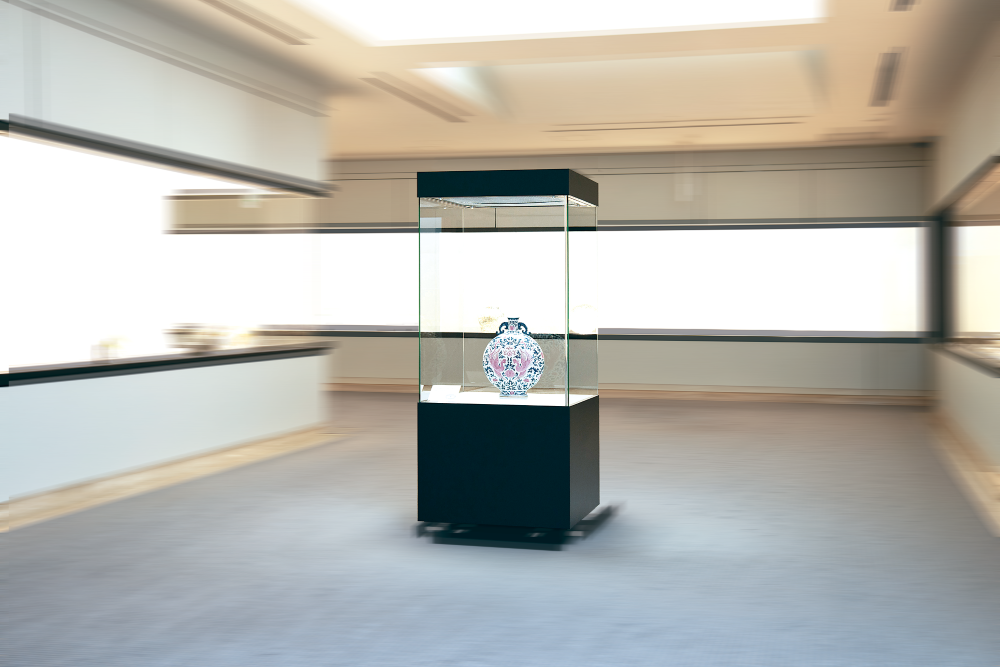
Everyone has seen a natural treasure or an important cultural property behind the glass of a museum display case at some point in their lives. Far fewer, however, know what kind of measures are taken to protect these objects of historical value from the threat of large earthquakes. In this article, we’ll take a look at the seismic isolation technology that protects valuable cultural property from tumbling over or being otherwise damaged by earthquakes.
A Recent Series of Large Earthquakes
Recent years have seen large earthquakes of seismic intensity 7 and greater bring devastation to various parts of Japan, from the most recent Noto earthquake that struck on January 1, 2024, to the Hokkaido Eastern Iburi earthquake in 2018, the 2016 Kumamoto earthquakes, and the Great East Japan Earthquake of 2011. Each disaster brings reports of damage to display cases and cultural heritage items at museums, making it imperative that countermeasures be taken to protect these irreplaceable objects from future earthquakes.
Seismic Isolation Optimized to Protect Cultural Properties from Earthquakes
There are three ways to defend against earthquakes: earthquake-proofing, seismic damping, and seismic isolation. Earthquake-proofing involves an object withstanding tremors. It assumes that the structure of the object can withstand the force of seismic tremors without being damaged. Seismic damping reduces the energy of earthquake tremors. These structures absorb seismic tremors using built-in seismic damping materials such as weights. Finally, seismic isolation deflects earthquake tremors. Installing a seismic isolation system between a structure and the ground prevents the direct transfer of energy from seismic tremors to the structure itself.
THK currently makes a product that adapts the principle of seismic isolation for use with display cases. These seismic isolation systems, when installed beneath display cases, protect the important cultural properties within by absorbing and reducing the energy of violent seismic tremors. Seismic isolation has garnered increasing interest in recent years as the most effective earthquake countermeasure for protecting cultural properties.
Museum Display Cases
Most people have likely seen a number of different display cases before in museums. These cases must not only give visitors a clear, appealing, and impactful view of the objects arrayed inside, but also protect and preserve these objects. Particularly in Japan, where earthquakes are common, display cases that incorporate seismic isolation to protect and preserve cultural properties are attracting attention.
While adding seismic isolation to display cases drastically reduces the impact of seismic tremors, museums must, at times, relocate these cases as they change their layout. This has complicated the matter of fixing them in place and, in certain situations, made seismic isolation a challenging proposition.
Creating a Seismic Isolation Table Using Lessons Learned from Large Earthquakes
Countless times in the past, the occurrence of an earthquake has prompted museums to discuss what measures to take against them. In the midst of this, THK hit on the idea for a seismic isolation table that could minimize how much a display case might shake during an earthquake and thus reduce damage to the case itself and the objects inside while also preventing human injury caused by a case or a display object falling over or the glass of a case shattering. Using this idea as a springboard, we developed the Seismic Isolation Table Model VIT to fit standard sizes of the freestanding rectangular display cases often seen in museums.
The Seismic Isolation Table Model VIT can be installed on the bottom of a display case without needing to be fixed to the floor. Adding optional casters makes it easy to rearrange display cases one seismic isolation system at a time. Beyond freestanding rectangular display cases, the VIT provides seismic isolation for small objects in general and can be used as an earthquake countermeasure in a wide range of applications. It can protect irreplaceable assets from earthquakes even where seismic isolation has seemed a lost cause until now.
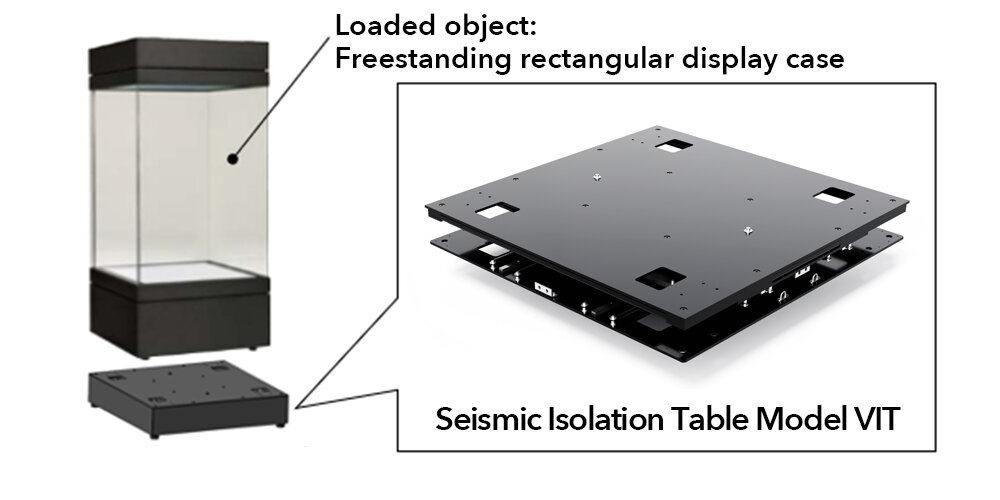
Five Features of the Seismic Isolation Table Model VIT
1. An expansive lineup with a standard surface shape
The VIT lineup is compatible with a variety of display cases, allowing for optimal product selection. This expedites discussions about installation and supports a smoother installation process overall.
Shape: The square surface allows the VIT to be used as a seismic isolation system for various kinds of loaded objects.
Product lineup: These seismic isolation devices, primarily intended for freestanding rectangular display cases, come in four different surface sizes (from 600 mm to 1,200 mm wide).
2. Standardized seismic isolation performance
We provide the results of response analysis performed with standard seismic waveforms so that the effectiveness of our seismic isolation can be verified without complicated calculations or evaluations. This allows customers to select the product they want with peace of mind.
Performance verification method: The range for the mass of the loaded object is set for each phase of the response analysis, which is performed using three standard waves (from the 1940 El Centro, 1952 Taft, and 1968 Hachinohe earthquakes) (50 kine) and the JMA Kobe wave. This makes it easy to confirm the performance of the VIT.
3. Thin design
The VIT can be installed without detracting from the design of a display case's exterior. It also allows for effective use of limited display space.
Design: The height of the VIT, including its two-axis seismic isolation unit, the finished steel plate, and the top frame, comes in at just 96 mm.
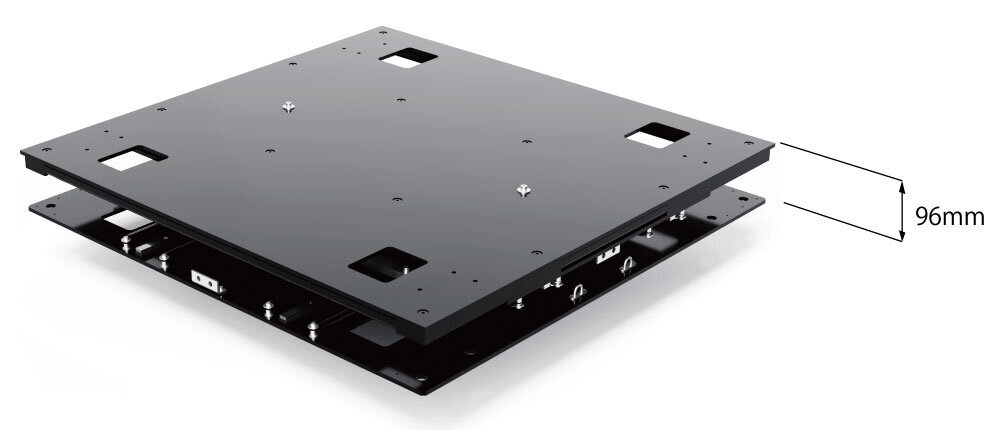
4. Maintenance-free operation
Dust seals on the LM Guide units used by the Model VIT eliminate the need for daily maintenance, which helps to reduce the cost of managing the equipment.
Specifications: LM Guide units with dust seals provide linear motion for this maintenance-free product. The specific LM Guide used here is the Utility Slide Model UGR.
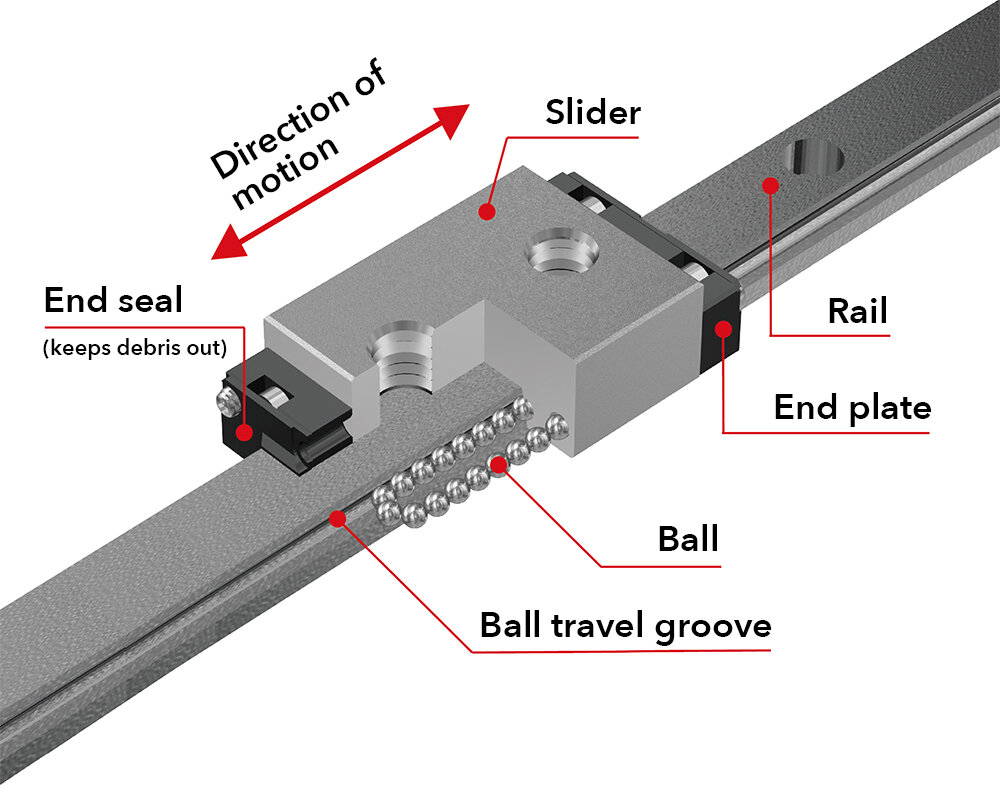
5. A wide array of options
With add-ons like a cosmetic baseboard to go around it and a base frame to simplify moving it, the Model VIT can be customized to suit a variety of needs. These options provide seismic isolation tailor-made for different installation locations and methods of use.
Options: We offer a slide-on cosmetic baseboard to go around the seismic isolation system, a base frame designed to help move loaded objects, and other optional add-ons.
Use Cases for the Seismic Isolation Table Model VIT and the Rectangular Seismic Isolation Table
The Ohara Museum of Art (Using the Seismic Isolation Table Model VIT)
Located in Kurashiki, Okayama Prefecture, this private art museum is known as the first in Japan to center its collection around Western art. Though mainly known for its many famous Western paintings, its works of Japanese and Eastern art make it near and dear to many as a place for appreciating a diversity of styles. We are honored that the museum uses our Seismic Isolation Table Model VIT to protect its many invaluable pieces from earthquakes.
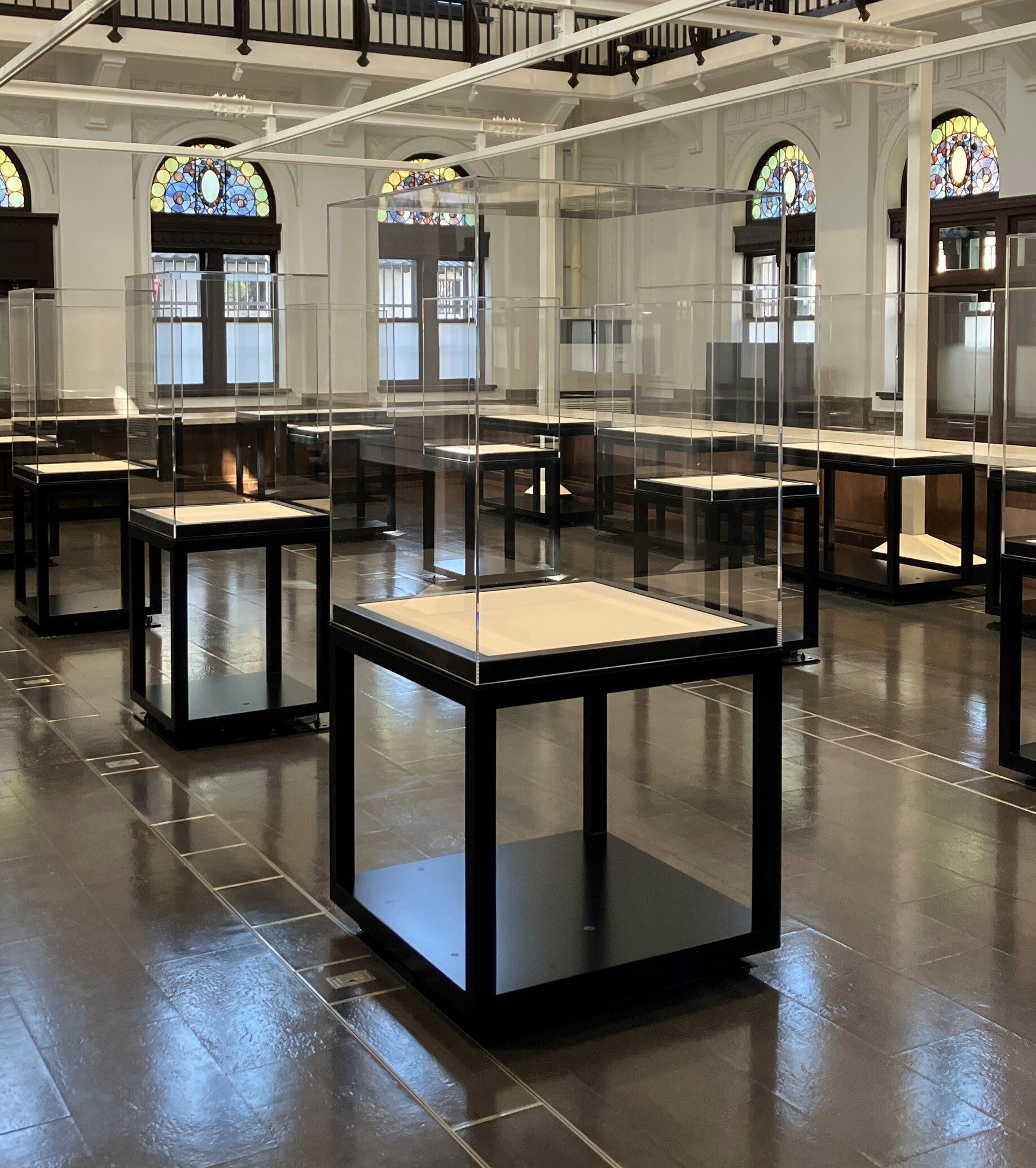
The National Crafts Museum (Using Our Rectangular Seismic Isolation Table)
Located in Kanazawa, Ishikawa Prefecture, this museum preserves and displays works of traditional and contemporary Japanese craftsmanship. Traditional crafts continue to thrive in Kanazawa. In the midst of the city's rich culture and history, the museum gives visitors a look at the allure of Japanese handicrafts. We are honored that the museum uses our rectangular seismic isolation tables* to protect its many invaluable pieces from earthquakes. We've even received words of thanks from the museum’s director, Mr. Karasawa, who recalls that “The 2024 Noto earthquake caused extensive damage at a number of cultural centers, but here, not a single piece protected by seismic isolation suffered the same. This is all thanks to these display cases and their seismic isolation systems, and I am immensely grateful for them.”
* We provided these made-to-order products before the release of the Seismic Isolation Table Model VIT.

These are just two examples of museums that are using the Seismic Isolation Table Model VIT and our rectangular seismic isolation tables, but there are more such museums in Japan and around the world using these products to protect the cultural assets in their collections.
Installing and Using the Seismic Isolation Table Model VIT
Installing the Seismic Isolation Table Model VIT couldn't be easier! The first step is to get in touch with THK. We’ll ask about the type of cultural property you want to protect and the size and placement of your display cases so that we can propose the best Seismic Isolation Table Model VIT for your situation.
Installation Process
1. Consultation/Inquiry
Start by reaching out to us by phone or using our inquiry form. Our expert staff are ready to help.
2. Client interview/Proposal
After hearing the details of your situation, our representatives will propose the Seismic Isolation Table Model VIT with the best size and specifications for your needs. We offer four types of Model VIT to match the sizes of various cultural properties. They fit display cases with base dimensions of 600 mm × 600 mm, 750 mm × 750 mm, 900 mm × 900 mm, and 1,200 mm x 1,200 mm.
3. Ordering and delivery
If you think our proposal meets your needs and decide to order the product, we will arrange for its prompt delivery.
4. Installation
Simply attach the Model VIT to the bottom of the display case and you’re done! There’s no need for any special installation work. If you’ve purchased the optional casters, moving display cases with the Model VIT installed is easy too.
Preserving Important Cultural Properties for Generations to Come
Cultural properties are valuable pieces of our heritage that reflect our culture and history, and we have a responsibility to pass them on to future generations. In earthquake-prone Japan, this means that it is crucial that we effectively protect these precious assets from earthquakes using seismic isolation. Beyond this, as seismic isolation systems are increasingly stipulated as a condition for borrowing objects to display in special exhibitions, these systems are only becoming more important to the way that cultural properties are used.
Thanks to the Seismic Isolation Table Model VIT, valuable cultural properties for which seismic isolation had been abandoned as infeasible due to challenges with installation can now be protected from earthquakes and preserved for the future with confidence. We hope that you will consider using THK’s seismic isolation technology as a new way to protect the cultural properties under your care from earthquakes.
THK's Seismic Isolation Table Model VIT for Display Cases Now Available to Protect Historically Valuable Cultural Assets (News Release)Seismic Isolation Table Model VIT Catalog (PDF)
* This content is based on information that was released in Japanese on May 28, 2025.